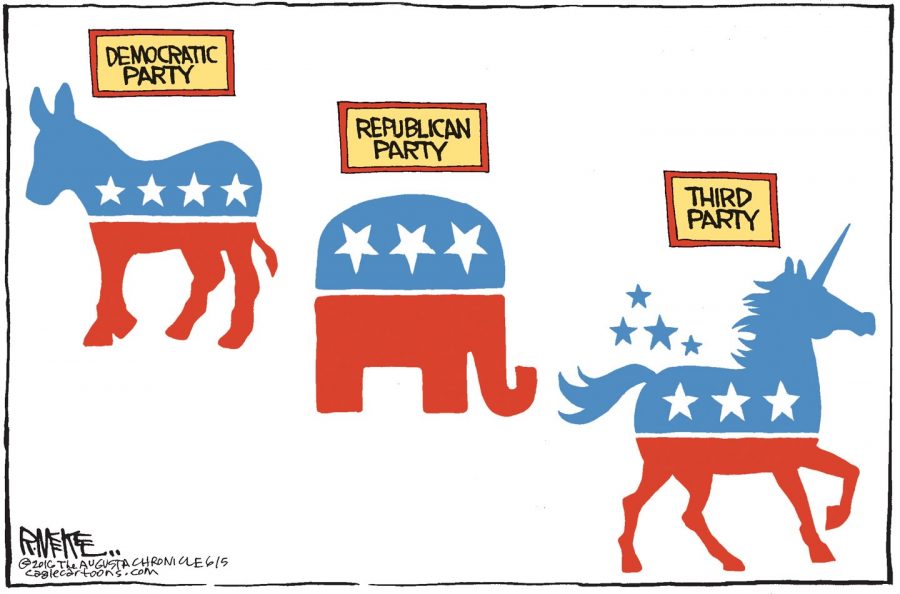Why Just Two Options?
A Breakdown of the United States Two Party System
November 6, 2020
As someone who cannot vote, I find myself looking at politics as merely an observer. I do not stray far from this observation deck, as I am no expert and not well versed in the world of politics. I know the basics, and occasionally, upon further investigation, participate in friendly conversation on current issues in politics, because why not. But, as I reach the top of the political participation ladder, as I near the voting age of 18, I am somewhat overwhelmed to see what options await. Particularly the polar opposition of the two major, and arguable only, political parties.
Though the American electoral system is quite simple, and for most U.S. born citizens, every history class we have taken has engrained it in us. Voters, those who are entitled and chose to vote, choose between the two major political parties, typically Democratic or Republican. Both parties choose national representative assemblies to serve as the parties’ candidates. The candidate that polls the largest number of votes wins. Now there are more complicated components to the U.S. electoral system, as with any aspect of the U.S. government, but I am no expert, as I said. This electoral system obliges the two parties to compete for majority votes in specific areas, such as major cities and states.
This majority support is sought mostly due to the United States’ presidential system. Each party must represent the inclinations of the most politically dynamic elements of the public, despite the opposition between the two. Although Republican and Democratic views are adverse, the elective would not necessarily cause a radical shift in the country’s policies as the U.S. government can reserve its stability even with this fight of interests.
The choice between political parties in the United States is pretty clear cut. Those who identify somewhere “in-between” this crucial line often witness the extremes to which each side’s supporters take their position. Regardless, the two-party system moderates and checks the hostility and controversy, which is the core of American politics through broad agreements among the two sides. Yet, third parties attempt to emerge, such as independents and libertarians. They are outmatched against the two main parties. Those candidates running independently often acknowledge their disadvantage and associate with the leading parties rather than create their own. This “gray area” of parties outside of American political tradition has limited strength, and specific issues concern them rather than broad-based interests.
The American two-party system was inevitable when reflecting on the history of the early republic. The initial split of the Democratic-Republican party into the Whigs (which became the Republican party) and Democrats resulted from the disagreement over the balance of power in government. This split proved to further the collective representation of individual interests. While technically in the U.S., we have complete freedom to voice anything to the government, our voice is not sure to be heard. Parties amplify the otherwise quiet individual voice by organizing their ideas and concerns into a cohesive and compelling message.
Current and future political participants with little political knowledge, like myself, use party identification to simplify voting; even if one does not know much about the candidates, they can make a reasonable decision based on either party’s judgment. Without the party system, the American democracy you see today would not be possible. Though this system has functioned for over a century, it continues to evolve as its supporters do with new issues and consequences. At the end of the day, the peoples’ observations conceive their perceptions, which is essential to the U.S. political system, and ultimately serves as a deciding factor for one’s political judgments ahead.

